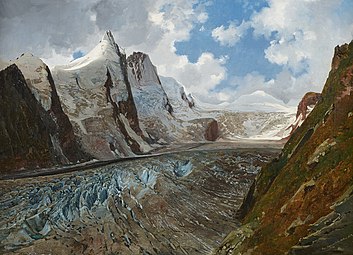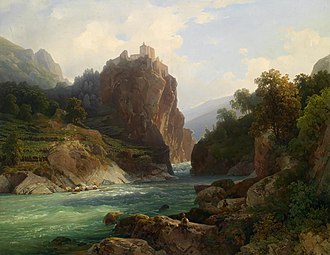Life and work
He was born to Johann Ender, a junk dealer, and was the twin brother of Johann Nepomuk Ender, a history painter. He and his brother were both enrolled at the Academy of Fine Arts, Vienna, where he began by studying history painting with Hubert Maurer, but switched to landscape painting with Laurenz Janscha then, after Janscha's death in 1812, with Joseph Mössmer. He was awarded the Academy's first prize for landscape drawing.
In 1817, after several study trips, he was awarded the "Great Painter's Prize". The winning canvas was purchased by Prince Klemens von Metternich, who became Ender's patron. This made it possible for him to take part in the Austrian Brazilian Expedition, during which he made over 700 drawings and watercolors. After his return, he accompanied Metternich to Rome and remained there, on a government pension, until 1823. After that, he worked for Metternich in Salzkammergut and became a member of the Academy in 1824. Two years later, he made a study trip to Paris.
He was named a court painter to Archduke John in 1828. He accompanied him on a trip to the Middle East and Southern Russia in 1837; visiting Istanbul and Greece. Upon his return, he became a Professor at the Academy; a position he held until 1851, when he retired. His paintings grew to be very popular, and were often engraved by artists in England.
In 1845, he received an appointment as an Imperial Councilor; a largely honorary title. In 1853, he was awarded the Order of Franz Joseph. He made extended visits to Italy in 1855 and 1857.
A street in Vienna's Meidling district was named after him and his brother in 1922.

Johann Peter Krafft was a German-born Austrian painter who specialized in portraits, historical works, and genre scenes.

Joseph Nigg was an Austrian painter, with painting on porcelain a specialty.

Johann Adam Klein was a German painter and engraver.

Johann Nepomuk Ender was an Austrian portrait painter and engraver.

František Tkadlík was a Czech portrait painter and draftsman.

Franz Rumpler was an Austrian genre and landscape painter.

Ludwig Ferdinand Schnorr von Carolsfeld was a German Romantic painter, engraver and lithographer.

Johann Nepomuk Schaller was an Austrian sculptor. His most famous work is a bust of Ludwig van Beethoven at age 55, created at the request of the composer's secretary Karl Holz in 1825. It was later presented to the Royal Philharmonic Society, London, on the occasion of the Beethoven Centennial.

Johann Anton Alban Ramboux was a German painter and lithographer.

Eduard Gurk was an Austrian landscape painter and printmaker, who worked for the Habsburg Court under the Emperors Francis I and Ferdinand I. He was especially well known as a watercolorist.
Josefine Swoboda was an Austrian portrait painter. She was one of the most active Vienna portraitists.

Alfred Zoff was an Austrian Post-Impressionist landscape painter.

Hans Larwin was a Viennese genre painter and academician.
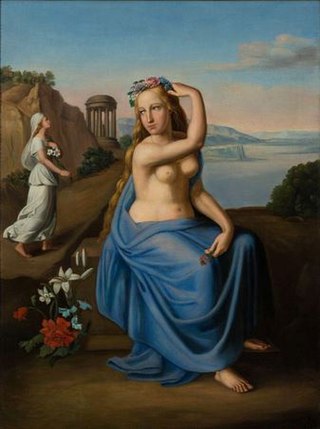
Anton Ferdinand Schaller was an Austrian painter in the Classical style.

Rudolf Swoboda was an landscape and animal painter from the Austrian Empire. He is generally referred to as The Elder to distinguish him from his nephew, Rudolf, who was also an artist.

Heinrich Carl Schubert was an Austrian drawing teacher and painter; specializing in landscapes and flowers.

Cecil van Haanen was a Vienna-born Dutch portrait and genre painter, whose significant work was centred at Venice.

Karl Ruß was an Austrian painter in the Biedermeier style.
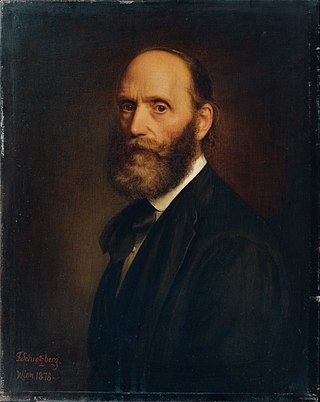
Franz Schrotzberg was an Austrian portrait painter.
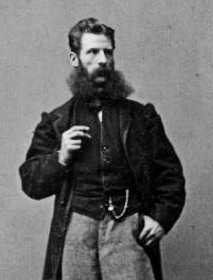
Teutwart Schmitson was a German-Austrian genre and animal painter, in the Realistic style. He specialized in horses and cattle.
This page is based on this
Wikipedia article Text is available under the
CC BY-SA 4.0 license; additional terms may apply.
Images, videos and audio are available under their respective licenses.

